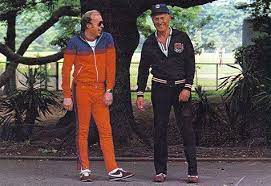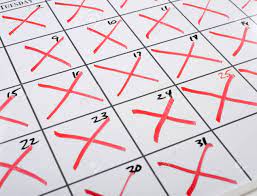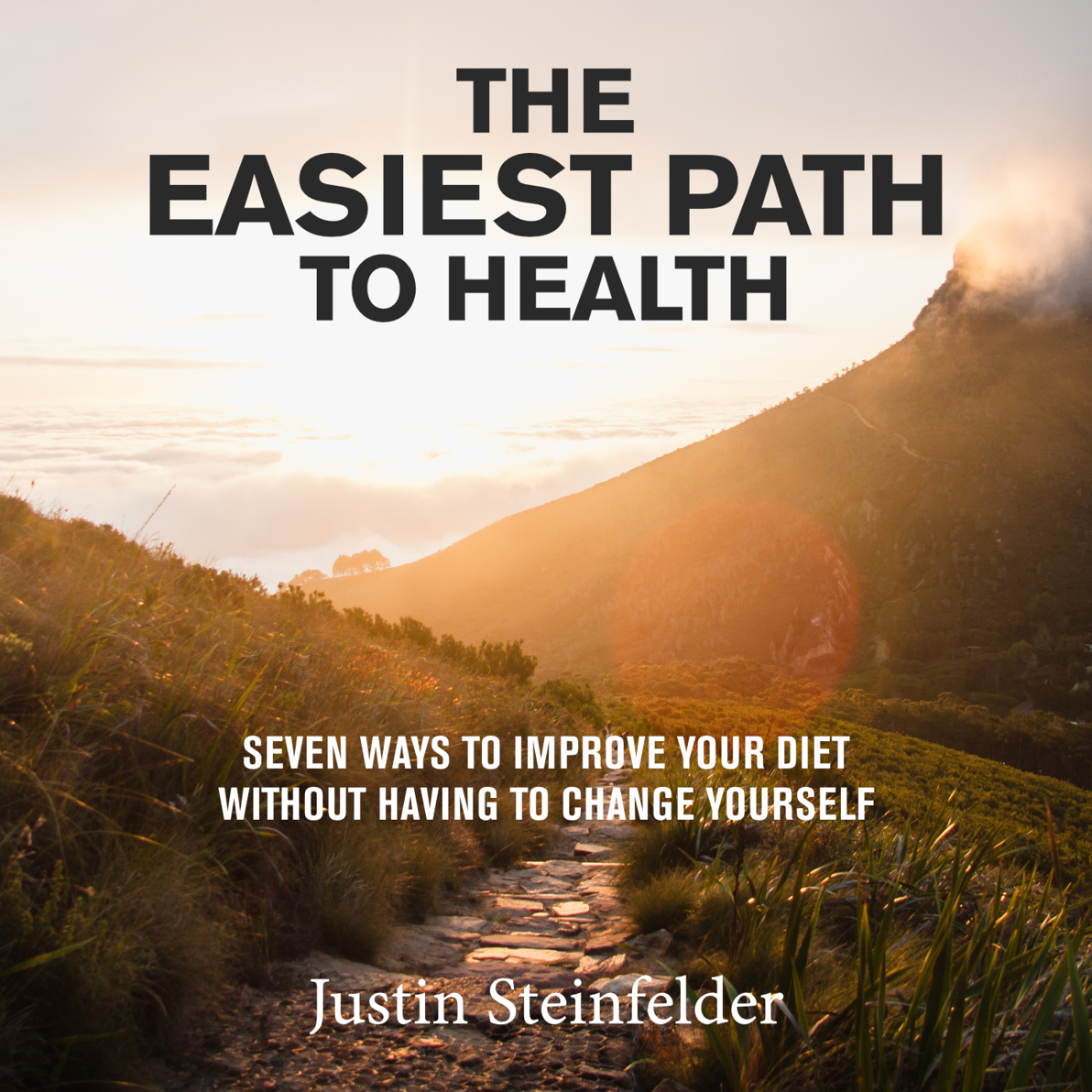Seinfeld’s Problem: Now or Later?
The comedian Jerry Seinfeld once told a joke that, oddly, captures the dieter’s central problem.
The premise is that Seinfeld has a headache and he’s shopping for medicine. But when he gets to the medicine aisle, he gets overwhelmed by the choices. One brand is “quick-acting,” the other one is “long-lasting.” Jerry doesn’t know what to do.
“When do I need to feel good? Jerry wonders, “Now or later?”
It turns out, Seinfeld was on to something. Over the course of the last half century, scientists have sharpened a theory on how our brains work, and this simple question is at the heart of it. The brain thinks and makes decisions in two distinct ways— one impetuous, one thoughtful. And it’s this dichotomy that plagues those looking to make positive changes — especially diet changes.
*
One of the key questions in diet this: how do you get yourself to do things that you know you should do but don’t feel like doing?
You know exercise is good, but the couch is cozy. Made beds are better than unmade ones—no one argues that. But the made ones come with a drawback: making them.
That struggle is because of that very simple yet powerful division in our brains. One that, much like the Seinfeld quip, debates now and later. When do we want to feel good?
The solution to Jerry’s joke, experts tell us, is to find ways for the ‘Later brain’ to nudge, trick or lead the ‘Now brain’ into something positive.
One way to think of it is that your Now brain is sort of like a child, the Later the adult. The childish Now says “I want the toy now, daddy.” Your adult-like Later brain has to say, “It can wait until later.” The key is to use your adult-like Later brain to shape the world of impulsive triggers. In our toy example, maybe the only toys around are educational, or they come with a tradeoff, like first cleaning your room.
The win-win here is to realize the Now and Later both have strengths. The childish Now has energy and desire—fuel for action. The adultish Later has temperance and thoughtfulness– the temperance on which strategies are built.
When put together–strategy + energy– the two make for smart action. If you can use the Later brain’s strategy to shape the world to which the Now brain’s energy is exposed— it’s for the good of the whole.
So how would your Later brain do this?
There are three primary behavioral tools for this, which I’ve listed and explained in the rest of this article. Pick one tool and it will be effective. Put several together, the effects are exponential.
Three Tools for the Later brain: Environment, Community, Self
I explained these tools in my video, “Becoming foodwise.” They are:
(1) The Environment around you (kitchen, office),
(2) Your Community (friends, coaches, spin class), and
(3) Yourself (use your later brain to form new habits and behaviors).

The figure above represents the three tools in a specific order. As you move outwards from the core, the power of the tool decreases, but so does the difficulty of applying it. The inside is the most effective long-term, but is the hardest to implement.
First, on the outside is Environment. It’s your office and kitchen and car. It’s not you, but it surrounds you, which allows it to be changed easily, and influence you.
Next is Community—your friends, mentors, coaches. They’re living inside the Environment, one step closer to you. They are even more influential on your action, but also harder to change than your fridge.
Finally, comes You, the core. Obviously, any change to yourself will have the furthest reach, but it’s also the hardest tool to master.
For example, let’s say you want to build muscle. If you want to do that, why not start by modeling your program off of the G.O.A.T, Arnold Schwarzenegger. When Arnold was looking to become a bodybuilder in Austria in the 1960s, he used each of these tools over and over.
The first thing he did was start to change his Environment. One way was by postering his walls with weight-lifters he idolized—a tactic that has proven effective in research.[1] That was easy.
A little harder was from the middle circle– changing his community. Arnold found a supportive gym, a mentor to teach him proper technique, and a workout partner for motivation and fun. These relationships take longer to establish (and are often more expensive via time and money), but are more effective than posters.
Last and overtime, he would track his performance, noting which pieces in his workout needed to improve, and setting goals for the future. These are “You,” self-control tactics. They harder to follow through on, true. But, if you do follow through, their effectiveness is exponential.
There are many tactics within each category to pick from. Let me explain them further with a couple more examples. Then it will be your turn to use them.
(1) Environment: change what you see

“If you want to encourage someone to do something, make it easy.” Behavioral Economist, Richard Thaler
The outer most circle is the Environment. The place you live, your immediate surroundings.
I wrote about this in my (free) 60-page ebook, The Easiest Path to Health. The basic point of that book and Environment in general, is this: no matter how good you are, it always helps making your surroundings more conducive to your goals. Like the Thaler quote above— you want to make it easy.
For example, no matter how fast a sprinter, she’ll run slower on sand. Move that same sprinter to a track and she’ll gets faster without changing a thing about herself. It’s easier to push off of a solid foundation than mushy coastline.
The same is true for health. As much as possible, you want to construct your environment to favor your fitness routine and diet, like how Arnold used posters of his idols.
In The Easiest Path, I use the example of fruit bowls. Nothing could be easier.
Here’s the science— having things within sight (and, ideally, reach) makes them more likely to be eaten. If it’s cookies, you’ll eat more cookies. If it’s fruit, you’ll eat more fruit. If it’s kale…well at least it will cross your mind.
This has been shown in schools, in offices, and even at Google[2]. Ridding the counters of cookies and replacing them with fruits and vegetables made Google employees instantly eat healthier, without them doing (or knowing) anything. You might call it, starting with the low-hanging fruit.
*
Take a look at all the eye level foods in your kitchen, fridge and pantry. Are they healthy?
I can tell you this: whatever they are—healthy or not— you’ll eat them more than the ones closer to knee-level. What’s surprising is that that’s not only because of their tastiness— it’s because of their location.
The point: change what you see, change what you eat[3].
(2) Community: get help

“I have in my travels occasionally met promising young people who insist they are not going to ask for help along the way. They want to figure it out for themselves. Mine was the opposite approach. It is hard enough out there. Get all the help you can.” Phil Knight, founder of NIKE
The middle circle is community: your friends, your family, a coach, a mentor, a class, a book, a hero. There’s a reason this circle is closer to the core. Because even in a tough environment, if you’re surrounding by good, supportive people—people who believe in you, who will tell you the truth, who will push you—you’ll be ok.
Take that same sprinter form earlier, the one we moved from sand to the track. Already she is faster, but we can help her more. Not by changing her surroundings, but changing by whom she is surrounded.
It’s going to be hot in the summer and sometimes she won’t feel like running. The track is bouncy, but it’s not encouraging. If she’s feeling dejected, she’ll need a little help from her friends.
One way to do this is to give her a partner. When Phil Knight started NIKE, he had basically no idea what he was doing. Trained as an accountant, Knight knew spreadsheets, not how to buy shoes (which he was purchasing from Japan) and sell them (which he started selling out of his car). But he did have something incredibly valuable: a partner.
That partner was Knight’s college track coach and mentor, Bill Bowerman. Knight says in his book, Shoe Dog, that he doubts very much as to whether NIKE would have ever turned into anything without his coach.
Bowerman knew running even better than Knight. But more importantly, he knew runners. He knew what they were thinking, feeling, longing for. Their problems and the solutions they sought. Given that NIKEs first customers were runners, this was huge. And Bowerman did countless other things, like creating the first NIKE sole with a waffle maker.
But more importantly than his knowledge and ingenuity, Bowerman gave Knight what a mid 20s kid needed. He gave the young Knight a partner, a friend, and a mentor. He infused him with confidence and supported his enthusiasm. “It was the team,” Knight said, citing Bowerman as the prime example, ”that allowed this business to succeed.”
*
You’ll eat healthier, you’ll jog more if you have a partner in it with you and a trainer egging you on. Better yet, get a friend, a community, take classes. Engage with (or read about) the people who are also doing it, or have already done it.
Key Takeaway: you become who surrounds you, so surround yourself with those you want to be like or who encourage and inspire you to be what you want to be.
(3) You: the key to self-control.

“The place to improve the world is first in one’s own heart and head and hands, and then work outward from there.” Robert Pirsig, Zen and The Art of Motorcycle Maintenance
The innermost circle is the key. It’s the core.
It’s something we all need to focus on if we want to have a shot at anything sustaining. But it’s also the hardest to focus on and continue to improve. It’s Us.
Back to the sprinter. We took her off the sand and put her on the track. She’s faster. We gave her a partner, a coach. She’ll run even harder, she’ll show up more consistently. But here’s the thing, she’s still the one doing the running.
When the race is going, and she’s about to quit, it’s on her. When she goes home at night, and she is a little down, a little sore, she needs to show up at the track again. And she needs to keep showing up, and showing up, and showing up, no matter what is going on in her head, in her life, or her body.
Arnold’s lifting partners were only there to spot, he had to lift the weights. Coach Bowerman helped Knight immensely, but Knight still had to show up, to sell shoes out of his trunk, to fly to Japan and negotiate distributor deals, to push his business and brand forward.
It’s the same in diet. Fruit bowls work, but they don’t fill themselves. Hiring a health coach or joining CrossFit will definitely help, but you have to keep showing up, paying the bill, and expenses might be tight. No matter the tools you select, you are the last stand.
Let’s be clear, this is hard. No doubt about it. But it’s 100% doable, and may not be as hard as you think. The first step is in just understanding one concept that guides self control, and one that is widely misunderstood. It’s called willpower.
Here’s a counterintuitive fact—those people with the most willpower actually use it the least. Most of their focus is actually on doing things Before the Moment. They anticipate the Moment—that time where it’s hardest to act in accordance with what you know you should– and do something beforehand.
So what do they do Before the Moment? What are the tactics?
One nearly irreplaceable self-control tactic is deceivingly simple. But it’s simplicity. Steve Jobs said, that often provides the most elegant solution. It’s called tracking progress.
Track and Measure: Seinfeld’s Calendar
Let’s talk about Seinfeld again, shall we?
Famously, when Jerry was trying to get good at comedy, he realized that he had to write every single day. But he also realized that it was hard to get himself to his writing desk every single day. In fact, he finds it to be somewhat painful to write.
So what did he do? He bought a calendar.
Seinfeld took his huge calendar and put it on the wall above his desk. There rule he made went like this. Everyday you write, you make an “X” on the day. Everyday you don’t do your writing, you leave it blank. What Jerry found was that when he would write for several days in a row, it would start to make a chain of “Xs,” a profoundly motivating chain. From there the rule was simple: don’t break the chain.
Now, of course, he did break the chain. Some days you have to miss: you’re sick, parents are in town, whatever. The only rule then is start a new chain as much as possible.
This may sound too simple to work, but it’s not. In fact, some of the strongest pieces of behavioral science we have show why Seinfeld’s simple calendar trick helped him stay on the writing track.
It’s because it measured his performance. When you’re aware of your performance, and implicitly, in what you said you would do, that awareness pushes you to be consistent. Once you establish a chain, it’s actually painful to break it. That pain, often called cognitive dissonance, is more painful than the doing of the hard thing.
Anyone who has ever tracked your steps knows this. If you have several weeks of 10,000, and it’s 8PM and you’re at 9200, you’ll probably go take a 10 minute walk, even around the house, to get to that number.
*
How do you apply this to diet? Buy your calendar, choose your goal, and start marking.
Implicit in Jerry’s process was what activity allowed him to place an X. It wasn’t just writing for six seconds—he had to sit for at least an hour. You have to come up with whatever your goal is going to be. Whatever shows you’ve earned the “x.” Mark the “x” when you ate one serving of broccoli, or on a day where you had no added sugar, or when over 75% of your meals were “healthy.” Then you can add in games.
When I was growing up, I wet the bed. I don’t mean when I was like two, I mean until I was about 12. If you have an overly sensitive bladder (like your boy did), there are specific things you can do to significantly shrink the chances of an “accident” occurring, like not drinking fluids after 6PM. (Just ask Fuller).
To get me to do those things, my parents actually purchased a Seinfeldian calendar, and we did the “x” marking. (Whether or not my bedwetting calendar influenced Seinfeld and his entire career is not yet confirmed). If I didn’t wet the bed, I got an X. But when I had a full month of Xs, I got to go to the toy store and by all of the wrestling figures I wanted.
Buy a calendar. Make a goal. Start “Xing.”
The bottom line: what gets measured, gets managed.
You’ve Already Started
This can all sound like a lot, I get it. But here’s the good news—you’re already on your way.
I don’t mean that in an Any Given Sunday, half-time speech, self-help seminar sorta way. That’s an empirical fact. It’s about the power of awareness.
Just realizing that this is an issue— that there is a gap between knowing what to do, and getting yourself to do it— is a great start. Just understanding that simple concept, that we need to get the Later brain to plan for the Now brain, and that it requires different skills— that’s half of the battle. Just having the knowledge that there are three tools you can easily leverage, you’ll start to use them.
“If there is a secret for greater self-control,” Professor Kelly McGonigal says, ”the science points to one thing: the power of paying attention.”
So now you know. You’re aware. You are paying attention. There’s only one step left to take:
Act.
[1] Arnold Schwarzenegger, as a teenager in Austria, had posters of bodybuilders all over his walls in his room. Apparently, his mother got concerned and told the Doctor (it was a different time).
[2] That’s right. Even techies can’t outsmart the mighty fruit bowl
[3] By the way, if you’re going to use this tactic, a fruit bowl is way better than say a nut bowl, even though they are both healthy. Why? Because nuts are highly caloric, so you want to be intentional about how much you eat, whereas you would be hard pressed to overeat apples.

